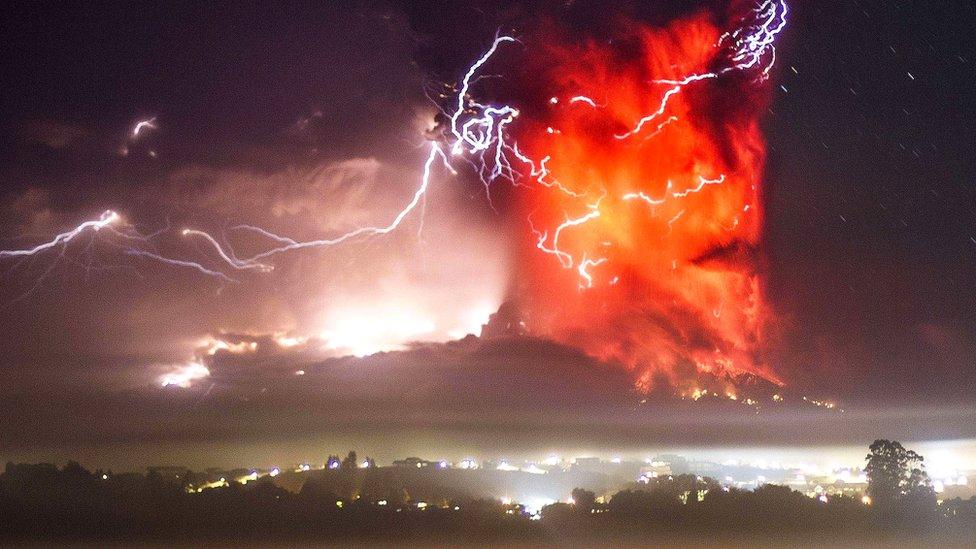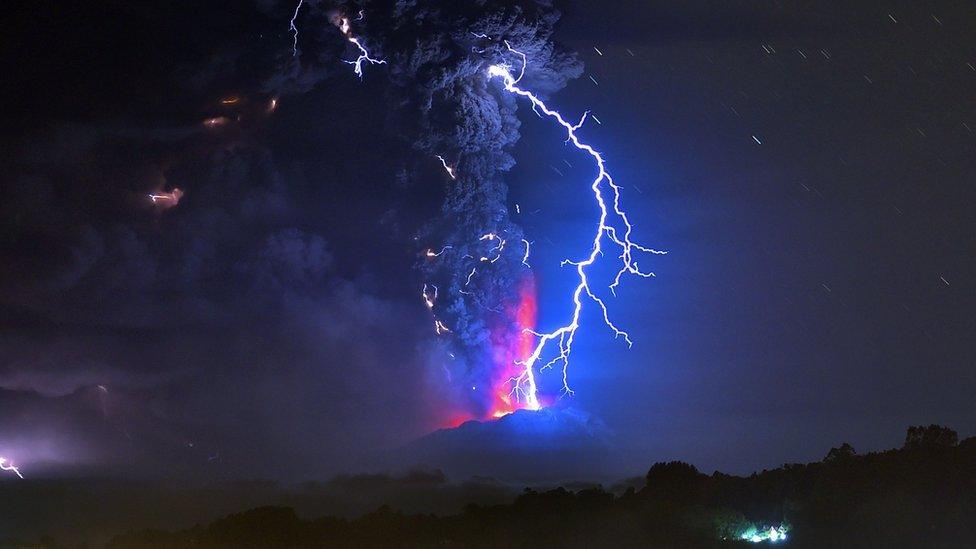Weird weather you've never heard of!
- Published

Volcanic lightning above a volcano in Chile, also known as a dirty thunderstorm
You may think you know all there is to know about hurricanes, tornados and snow storms from Siberia...
Maybe you like to keep up with the latest weather news and check the forecast every day?
But do you really know all about the amazing kinds of weather phenomena that occur on our planet?
Check out some of the incredible stuff that the weather reports aren't telling you!

Blue jets
Blue jets captured by astronaut Andreas Mogensen from the International Space Station
Though this weather certainly looks like a force of magic! It is in fact a natural phenomenon that scientists are still trying to understand.
This week, an Atmosphere-Space Interactions Monitor (ASIM) was sent to the International Space Station to try and find out more about these meteorological events.
Why does this happen?
A blue jet is known as a Transient Luminous Event, or TLE for short.
Usually occurring above thunderstorms, they are upward discharges of electricity - a bit like backwards lightning that aims towards the sky instead of down towards the ground.
They are quite faint and blue in colour, which makes them hard to spot.
There are other TLEs known as elves and sprites, but these are more common and better understood that blue jets.
Researchers hope that the ASIM will help them discover where blue jets come from.
The monitor's mission to discover more about the origins of these electrifying events will last at least two years.

Volcanic Lightning

Volcanic lightning strikes above the Calbuco volcano in Chile
If this looks like a picture from the next big movie blockbuster, then you would be wrong.
This is real life weather in action - it's volcanic lightning!
As if an erupting volcano wasn't terrifying enough, nature decides to add some lightning into the mix!
Why does this happen?
The lightning does not come directly from inside the volcano, it is formed in the column of smoke and ash that rises high above the crater.
Tiny particles of ash rub together as they explode from the volcano. This friction creates an electric charge, and a flow of electricity is formed through the particles.
This is when the lightning strikes!
Scientists are still working to understand the mysteries of volcanic lightning, also known as dirty thunderstorms.
I think this is one we'd be happy to watch from afar... maybe from the next country over?

Aurora Australis
You might have heard of the Northern Lights, or Aurora Borealis, but did you know that they happen in the southern hemisphere as well?
Southern Lights, known as Aurora Australis, are much rarer but just as spectacular.
Watch the lights in action
Why does this happen?
Solar flares that explode from the surface of the sun radiate solar particles out into space.
These solar particles strike the Earth's protective magnetic field, and follows magnetic lines down to the North and South poles.
When the solar particles meet with the oxygen and nitrogen in the Earth's atmosphere, they produce different colours of light.
Connecting with oxygen creates red and green light, and with nitrogen it creates green and purple light.
This is what causes the incredible colours in the sky.

Halo
Have you ever seen anything like this? A perfect circle of light forming in the sky!
Halos happen when a bright light source - such as the sun or reflected light from the moon - shines through clouds made up of ice crystals.
Solar halo in Mexico City
Why does this happen?
The ice crystals that the light shines through act like small prisms and mirrors, which refract and reflect light.
Refraction can change the direction of light and can split it into different colours.
The effect is similar to how rainbows are created.

Lenticular clouds
Does this look a bit like a UFO to you? Well you wouldn't be the first to think so!
Because of their smooth, oval shape, lenticular clouds have been confused for alien spaceships.

Lenticular clouds usually form near mountain ranges or in hilly areas
Why does this happen?
These clouds are formed when air moves over the top of hills or mountains.
As the wind cools it condenses and becomes a cloud, but lenticular clouds are different from other clouds in that they don't move in the sky.
While the cloud stays in place, it is shaped by new air rising up, making the cloud smooth and round.
So next time your mate claims they've seen an alien spaceship in the sky, make sure to tell them all about lenticular clouds before they put the call in to Nasa!
